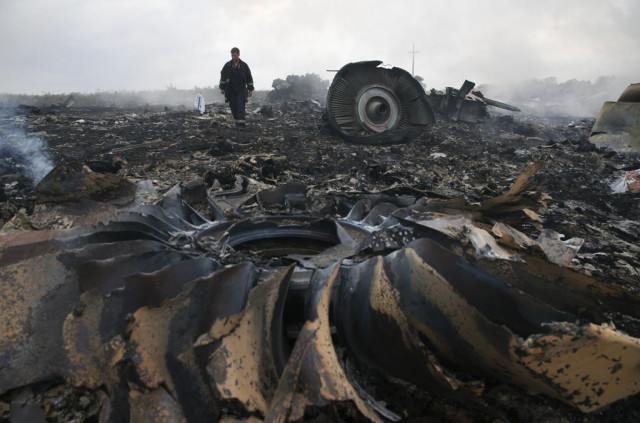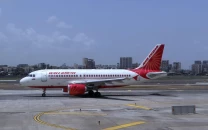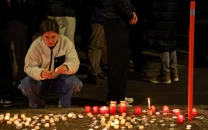The world's major air crashes
Here are the major air crashes around the world over the last 15 years.

• March 8, 2014: The Indian Ocean - Malaysia Airlines flight MH370, a Boeing 777-200, mysteriously disappears on its way from Kuala Lumpur to Beijing with 239 people aboard. No debris has been found, although experts believe the plane crashed in the southern Indian Ocean.
• July 17, 2014: Ukraine - Less than four months later the same airline's Flight MH17, also a Boeing 777, is shot down while flying over rebel-held east Ukraine on route to Kuala Lumpur from Amsterdam, killing all 298 people aboard.
• June 3, 2012: Nigeria - A Dana Air MD83 crashes into a neighbourhood near the airport in Lagos, killing all 153 people on board and at least six people on the ground.
• April 10, 2010: Russia - A Tupolev-154 carrying 96 people, including Polish president Lech Kaczynski and top political and military personalities, crashes when trying to land near the western city of Smolensk, killing all on board.
• June 1, 2009: The Atlantic Ocean - AF447, an Air France Airbus A-330 crashes in the sea between Rio de Janeiro and Paris, killing all 228 on board.
• June 30, 2009: Comoros - An Airbus A-310 belonging to Yemenia Airways crashes off the Comoros islands, shortly before landing in Moroni, killing 152 people. Only a 14-year-old survives and is rescued from sea.
• August 20, 2008: Spain - 154 people die when a Spanair MD-82 plane crashes shortly after taking off from Madrid for the Canary Islands.
• January 1, 2007: Indonesia - An Indonesian Adam Air Boeing 737, with 96 passengers and six crew aboard, vanishes on New Year's Day, halfway through a flight between the central island of Java and the island of Sulawesi to the northeast. The black boxes are found 25 days later.
• July 18, 2007: Brazil - An Airbus A-320 belonging to Brazil's Tam Airlines careers off the runway upon landing at the Sao Paulo airport in heavy rain, then shoots across a crowded avenue and slams into a warehouse before bursting into flames. A total of 199 people are killed.
• January 3, 2004: Egypt - A Boeing 737 charter plane belonging to Egypt's Flash Airlines crashes into the Red Sea several minutes after taking off from Sharm El Sheikh. All 148 on board are killed, including 135 French tourists.
• February 19, 2003: Iran - An Iranian military Ilyushin 76MD crashes in the Sirach Mountains, killing 302, including 275 members of the Revolutionary Guard.
• November 12, 2001: US - An American Airlines Airbus A-300 crashes in the New York borough of Queens shortly after taking off, killing all 260 on board and five people on the ground.
This disaster comes two months after militants hijacked four passenger aircraft, crashing three of them into the World Trade Center in New York and the Pentagon in Washington DC, killing around 3,000 people.
• July 25, 2000: France - An Air France Concorde crashes shortly after take-off from Paris's Charles de Gaulle airport on route for New York, leaving 113 people, mainly Germans dead and eventually leading to the supersonic airliner being taken out of service.
The world's worst air disasters remain the March 27, 1977, collision of two Boeing 747s on the runway at Tenerife in the Canary Islands, killing 583 people, and the August 12, 1985 crash into a mountainside of a Boeing 747 belonging to Japan Airlines, killing 520 people.



















COMMENTS
Comments are moderated and generally will be posted if they are on-topic and not abusive.
For more information, please see our Comments FAQ